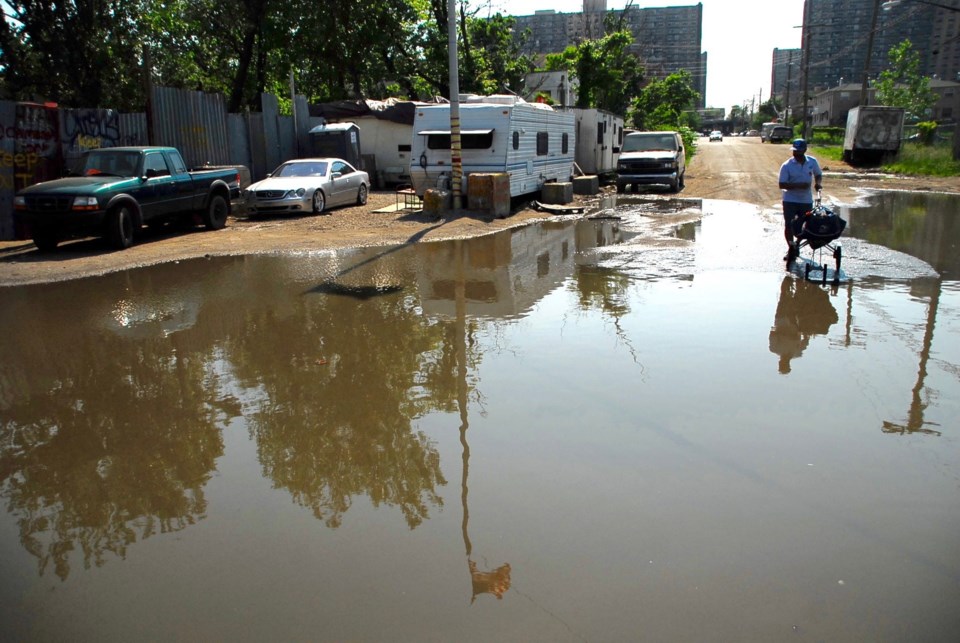As part of ongoing planning efforts to develop strategies and solutions for improving the neglected Jewel Streets community dubbed "The Hole," the New York City Department of Housing Preservation and Development hosted a workshop-- its third-- on Oct. 4 at JHS 218 James P. Sinnott in Cypress Hills.
The workshop focused mainly on reducing flooding through resilient green infrastructure, developing long-term land use plans for the Jewel Streets, improving pedestrian safety and connectivity to surrounding neighborhoods and facilitating job creation and community services.
First, city officials brought up the added sewers and catch basins which have only acted as band aids to the serious flooding problem plaguing the area, as it is still very much vulnerable to intense flooding during large rain storms as seen during the torrential downpour that hit the city last weekend.

“In my house, there was water 12 inches,” one resident said. “The road, you can’t drive on it.”
Those large storms will only become more frequent and disastrous because of climate change, especially for underserved communities, which is something city officials addressed during the meeting.
“This area faces a lot of climate risks, like flooding, due to climate change,” one HPD official said during the presentation.
On top of flooding, extreme heat conditions during the summer also plague the area as it scored 4 out of 5 on the Heat Vulnerability Index. Access to air conditioning and a lower median income compared to most NYC neighborhoods makes the area quite susceptible to significant climate events which led to the workshop’s next agenda point which was economic development and what to do with the large empty city-owned lot.
In an honest moment, an HPD official said, “Quite frankly, we don’t have a plan yet,” when discussing the empty lot on Stanley Ave.
That soon changed after everyone was broken up into groups to create a community-supported vision for the land.
Residents mentioned community gathering spaces, education, job opportunities and affordable housing as the main components they wanted out of development of the lot. With rampant disinvestment and neglect of the area, officials are hoping this development could economically revitalize the community.
A member of the East New York Community Land Trust had only one stipulation for the future plans, saying “Promise this will be made for the people, by the people.”
The HPD is still in the learning phase of their plan as they receive input on existing conditions, assets and goals and begin strategy development, with their next workshop meeting in November to go over issues of land use and transportation.
The next phase will focus on creating a draft based on everything gathered from the learning phase and eventually, they will enter the last phase where they will get feedback on draft recommendations and finalize a plan for the neighborhood.

Going forward, the plan is to continue the short-term neighborhood improvements made to address flooding and sanitation and eventually come to a long-term solution to fix the constant flooding problem that makes life extremely difficult and flat out unlivable at times for many residents, as well as crafting and finishing the vision for the empty city-owned land that will be used to hopefully breathe new life into the surrounding area.




